Winhangadurinya
On this page...
Winhangadurinya is a Wiradyuri word meaning deep listening/reflecting/meditation. The Winhangadurinya space gives visitors the opportunity, upon completing their journey through the Unsettled exhibition, to spend some time in the cultural practice of deep listening and to reflect upon the effects of invasion and genocide. These events have historical and continuing impacts on all Australians.

The Winhangadurinya deep listening and reflecting space.
Image: Abram Powell© Australian Museum
In the Winhangadurinya space, Ancestors, Country and First Nations community provide inspiration and guidance towards a rebirthing of Australia. This rebirthing may emerge on individual or collective levels, by making an informed and conscious choice to come into Country the right way. We are able to genuinely work towards a new future, where we honour the rights and responsibilities of sovereign First Nations peoples to care for Country and people.
The Winhangadurinya deep listening and reflecting space was designed by Fleur and Laurance Magick Dennis from Milan Dhiiyaan and created with a team of Elders, cultural knowledge holders and community members.
Winhangadurinya is an experiential space, a complex arrangement of three-dimensional objects with deep meanings. The creators of Winhangadurinya have attempted to convey some of the holistic meanings of the space through sharing stories about meanings of each of the objects (written by Fleur Magick Dennis, with additional cultural input from Aunty Daniella Chedzey. Wiradyuri language from A New Wiradjuri Dictionary by Stan Grant Snr and Dr John Rudder).

Stories about meanings of each of the objects written by Fleur Magick Dennis. Additional cultural input from Aunty Daniella Chedzey. Wiradyuri language from A New Wiradjuri Dictionary by Stan Grant Snr and Dr John Rudder.
Image: Fleur Magick Dennis and Frank McLeod© Fleur Magick Dennis and Frank McLeod

Design by Fleur Magick Dennis and illustrated by Frank McLeod. This artwork illustrates that the four giant shields and spears in Winhangadurinya spiritually represent our ancestral guardians being always present with us.
Image: Fleur Magick Dennis and Frank McLeod© Fleur Magick Dennis and Frank McLeod
Design by Fleur Magick Dennis and illustrated by Frank McLeod. This artwork illustrates that the four giant shields and spears in Winhangadurinya spiritually represent our ancestral guardians being always present with us.
dhulu/bilaarr (spear) 2021
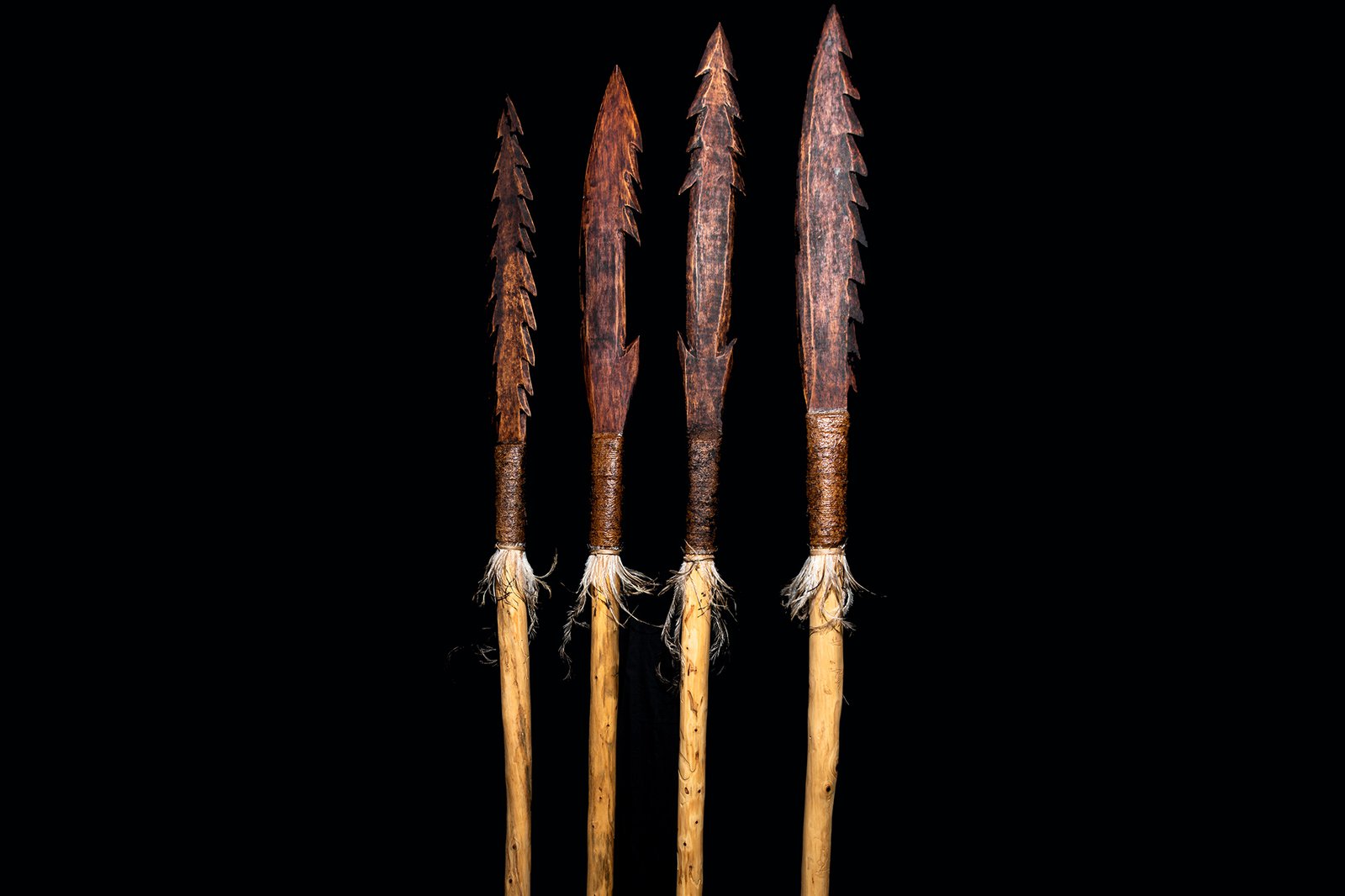
dhulu/bilaarr (spear) 2021
Made by Laurance Magick Dennis, Uncle Jay Adamson and John Wegener.
On loan for exhibition.
© Laurance Magick Dennis, Uncle Jay Adamson and John Wegener
dhulu/bilaarr (spear) 2021
Made by Laurance Magick Dennis, Uncle Jay Adamson and John Wegener.
On loan for exhibition.
Yiilaman (Shield) 2021

Yiilaman (Shield) 2021
Designed and made by Laurance Magick Dennis, with help from Uncle Jay Adamson, John Wegener and many
other community members. Carvings by Laurance and Fleur Magick Dennis.
On loan for exhibition.
© Laurance and Fleur Magick Dennis
Yiilaman (Shield) 2021
Designed and made by Laurance Magick Dennis, with help from Uncle Jay Adamson, John Wegener and many
other community members. Carvings by Laurance and Fleur Magick Dennis.
On loan for exhibition.
walumaldhaany-galang (Guardians)

The shields and spears represent all male and female warriors/guardians of First Nations peoples.
Image: Anna Kučera© Australian Museum
The shields and spears represent all male and female warriors/guardians of First Nations peoples. The warriors’ spirits, past, present and future are protecting all the children and all future generations. There are four shield and spear sets to represent the four main kinship groupings of our peoples. On the shields are carved stories relating to our kinship.
galin.gabangbur (Children)

All First Nations babies, past, present and future are represented by the four giant coolamons filled with flowers.
Image: Anna Kučera© Australian Museum
All First Nations babies, past, present and future are represented by the four giant coolamons filled with flowers. The flowers represent the spirits of the children and the spirit of joy that birth and children bring. They also represent the joy of children being raised strong in our culture and protected by our Ancestors/guardians and our ancestral wisdom.
dhurrirra ngiyanhigingu giyira (Birth/Rebirthing Our Future)
The rebirthing and healing of Australia can come about when people make an informed and conscious choice to come into Country the right way. This process begins by acknowledging First Nations where we live and work. Then, as citizens grow our understandings with First Nations, many may realise, that by honouring First Nations Peoples’ rights and responsibilities, that we may all experience a better Australia.
yawandyilinya, yindyamalidya nganhayung balumbambal (Taking Care of and Honouring Ourselves and Our Ancestors)
First Nations peoples’ responsibilities begin with taking care of and honouring ourselves. When we honour ourselves we also honour our Ancestors because each person is as one with his/her Ancestors. We honour our ancestral lineage, and we honour the gift of our own lives by taking responsibility for our own actions. Each person is boss of self.
ngarrbang-dhuradhu murun-gu (Dillybag of Life)
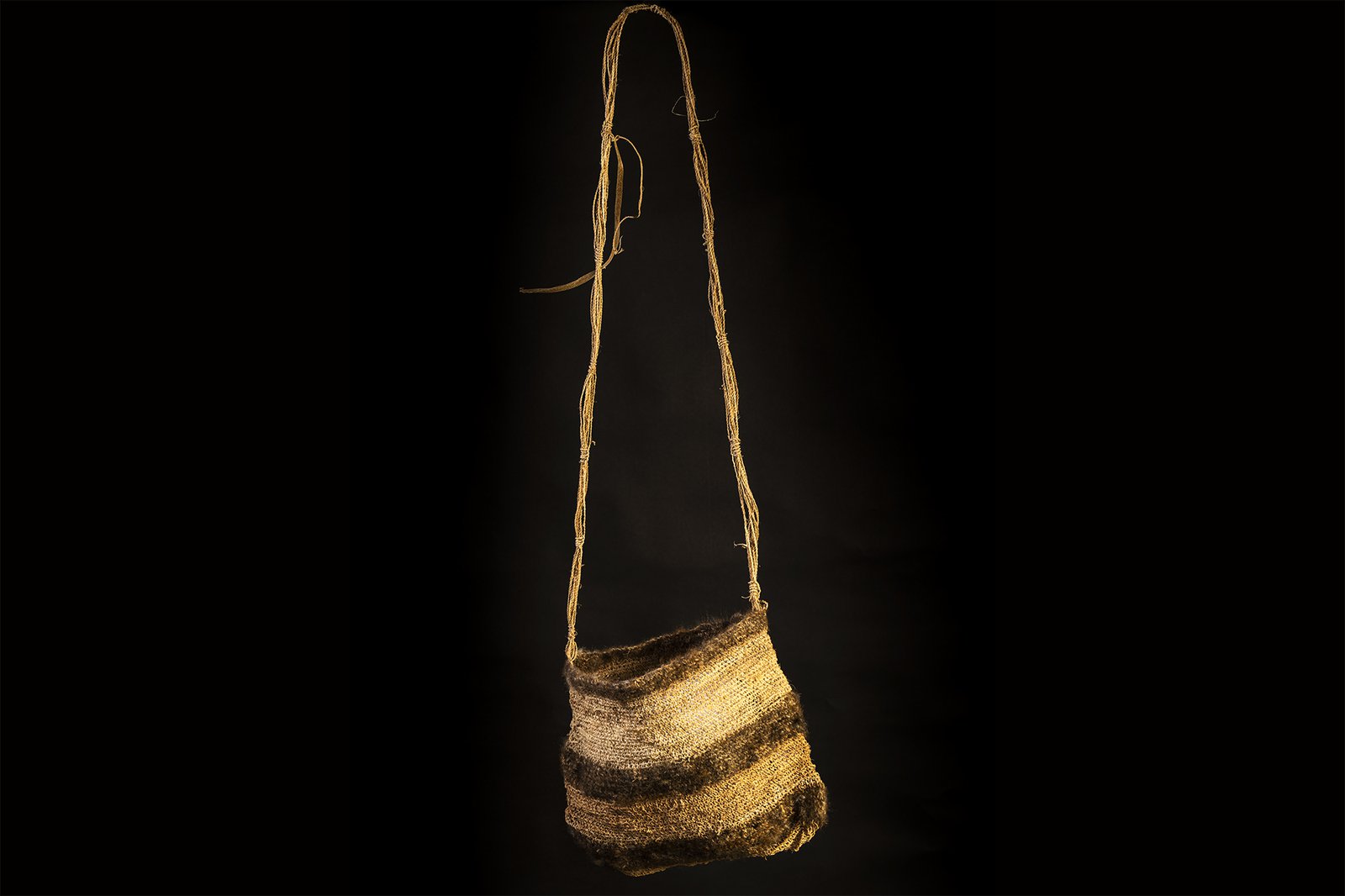
The dillybag hanging in the centre above the coolamons represents the creation power of women.
Image: Abram Powell© Aunty Daniella Chedzey
The dillybag hanging in the centre above the coolamons represents the creation power of women. Women are bringers of life and custodians of birthing and rebirthing. Within their dillybags of knowledge, the women hold significant power, power that is used for healing people and Country, for maintaining the balance and well-being of all of creation.
winhangagigiladha! ngunggiladha! (Care for Each Other! Share with Each Other!)
First Nations peoples’ responsibilities also include that we honour our family and our community by taking care of one another. Community-care is as important as self-care. All available resources are used to ensure that everyone is safe, fed, protected (e.g. housing), healthy and has access to water and to a meaningful life in connection with others. Each person is one with all people.
walumarra ngiyanhigingu ngurambang (Protecting Our Country)
Each person is one with Country. Everything in Country is in a kinship relationship with all people. Every tree, every plant, every animal, every insect, every mountain, every rock, every river, every waterhole, every place is family and is within and part of each person. If Country gets sick, the people get sick. When Country is well, everything and everyone is well.
gugurmin (Emu Mother in the Sky)
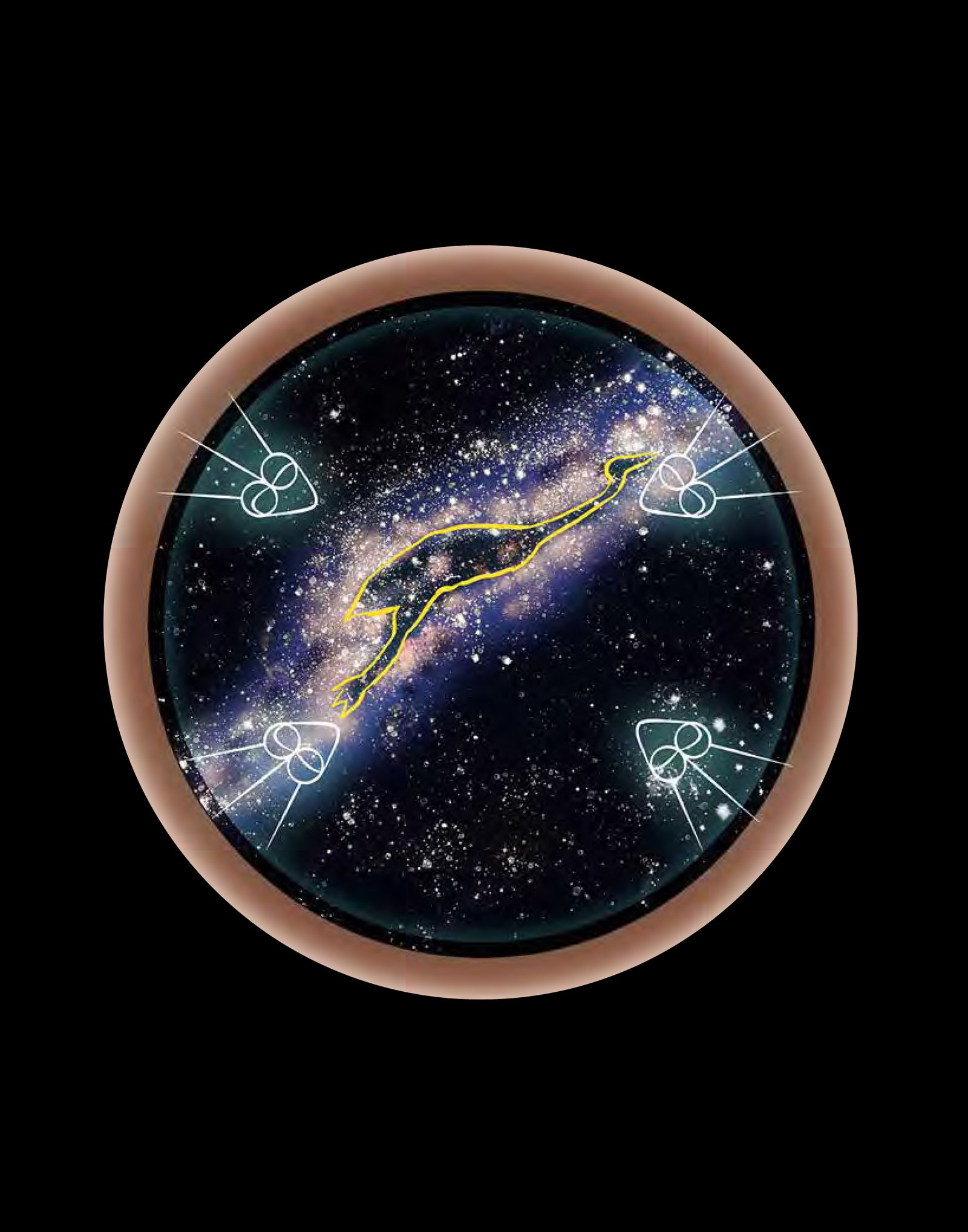
Emu in the sky.
Design by Fleur Magick Dennis and Aunty Daniella Chedzey. Illustrated by Frank McLeod.
© Fleur Magick Dennis, Aunty Daniella Chedzey and Frank McLeod
Emu in the sky.
Design by Fleur Magick Dennis and Aunty Daniella Chedzey. Illustrated by Frank McLeod.
The emu in the night sky is a culturally significant celestial shape, that is found in certain dark patches in the night sky. The mother emu in the sky represents the place where our babies’ spirits are created. She represents the birthing of new life. The four emu eggs also on display as part of Winhangadurinya further honour the new life she creates.
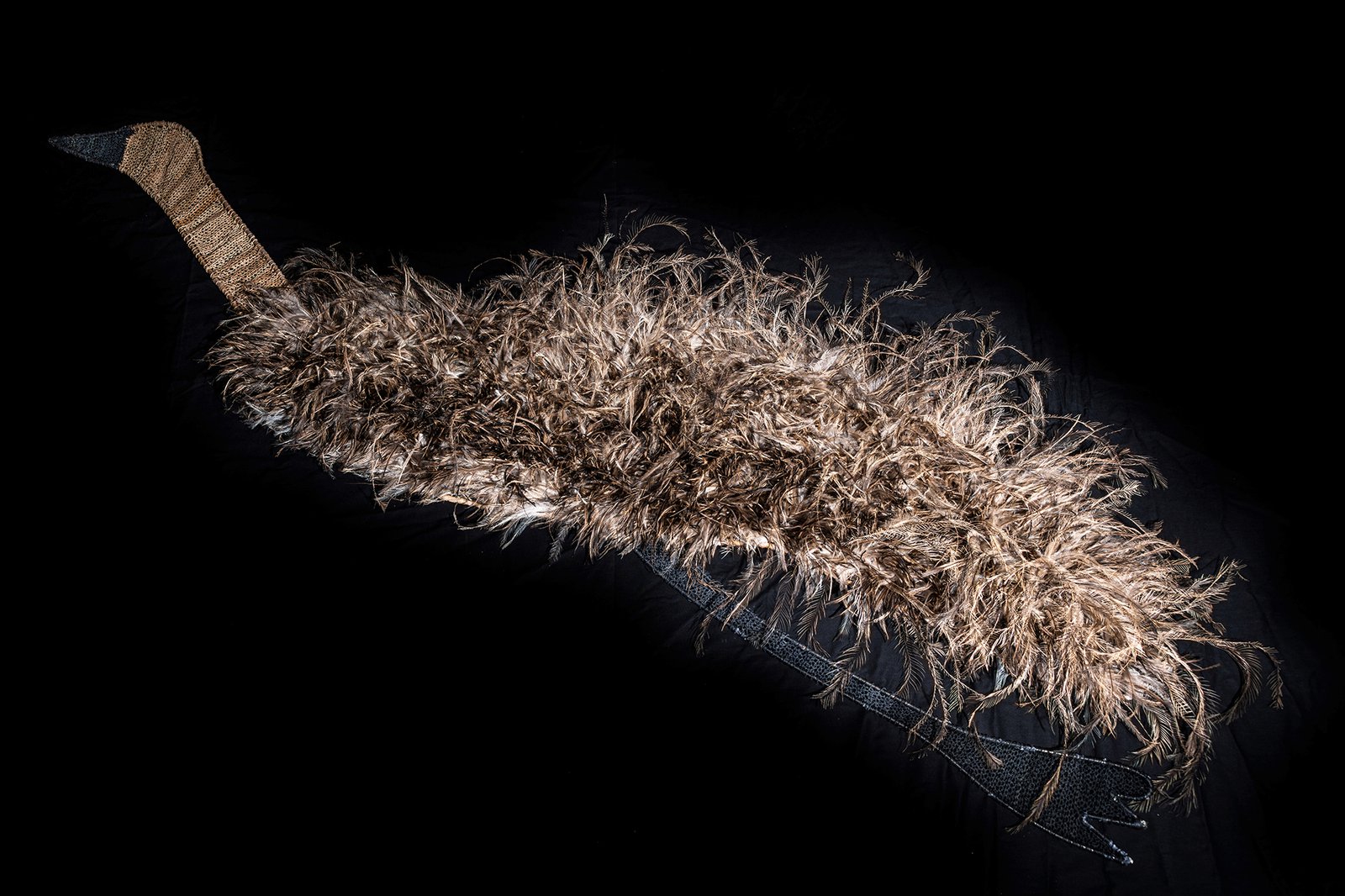
Woven Emu 2021
Made by Aunty Daniella Chedzey.
This emu has been handwoven using one continuous piece of handmade Kurrajong string.
On loan for exhibition.
© Aunty Daniella Chedzey
Woven Emu 2021
Made by Aunty Daniella Chedzey.
This emu has been handwoven using one continuous piece of handmade Kurrajong string.
On loan for exhibition.
dhulubang giralang bundinya (Spirit Shooting Stars)
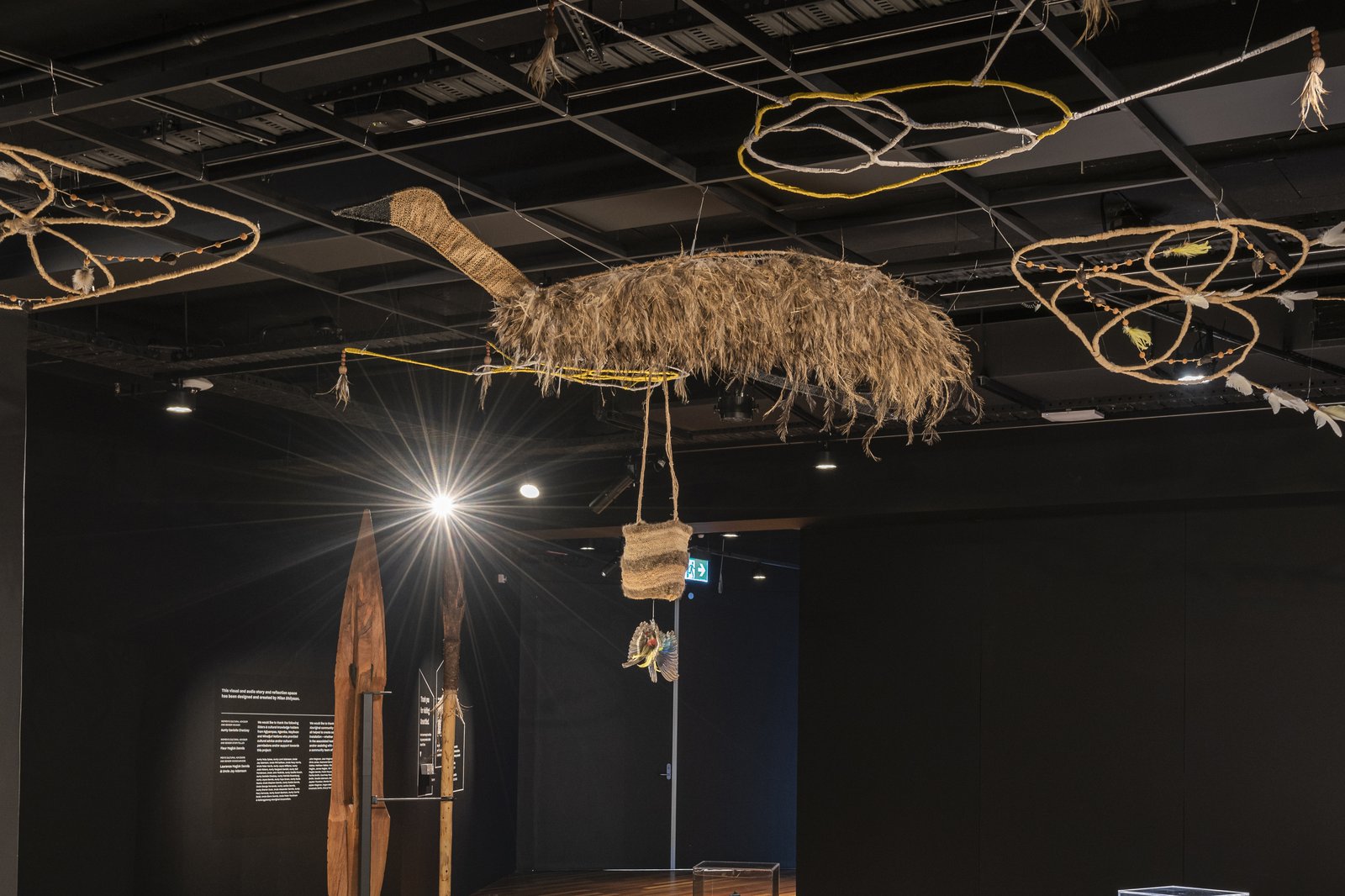
The shooting stars falling from the sky towards the coolamons represent the spirits falling to each baby on earth.
Image: Anna Kučera© Australian Museum
The shooting stars falling from the sky towards the coolamons represent the spirits falling to each baby on earth. Spirits come from the sky camp and each spirit lives multiple lives. Therefore, the shooting stars represent that each baby spirit is also an Ancestor spirit. Every person is both ancient and new in every moment. Both wise and learning.

